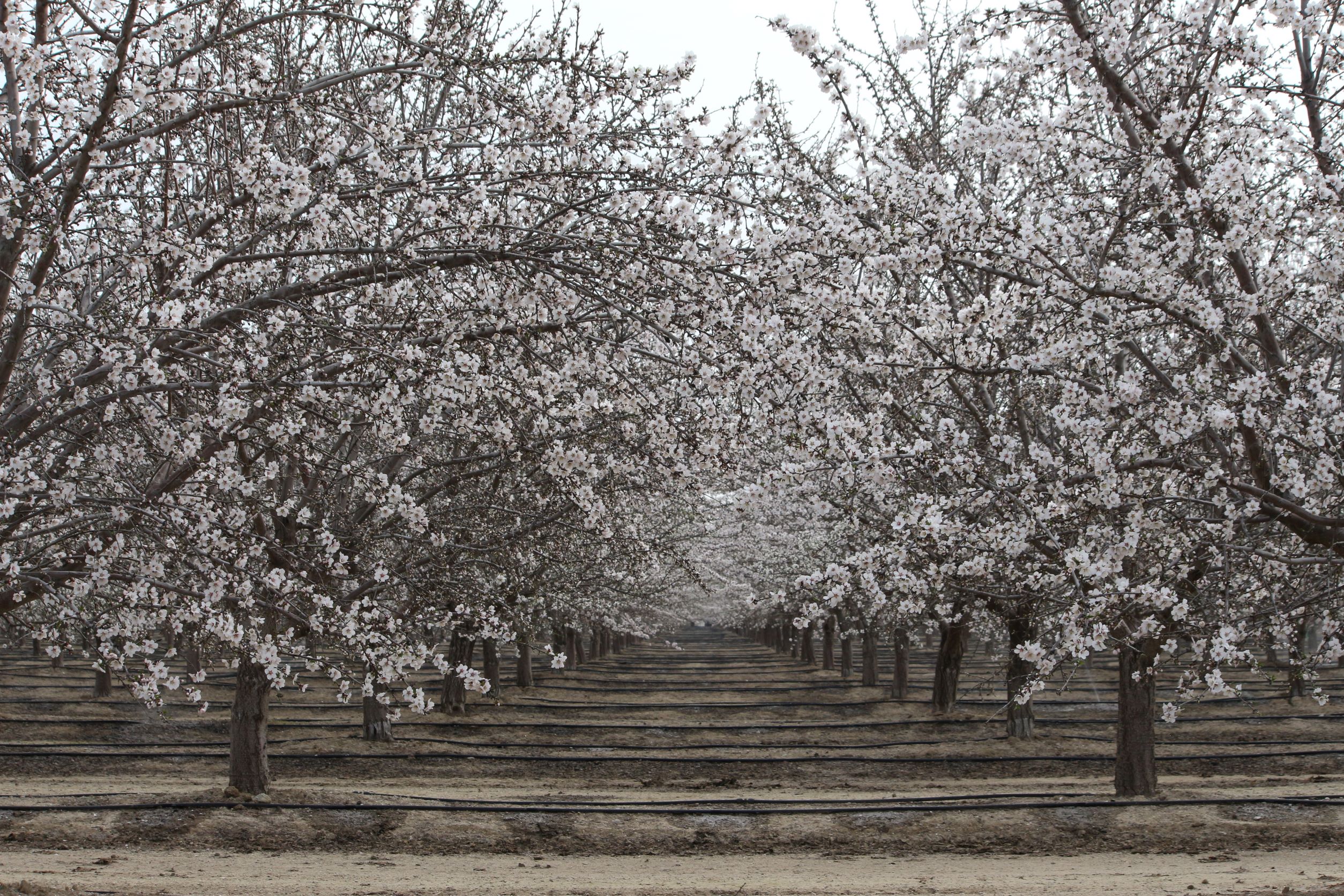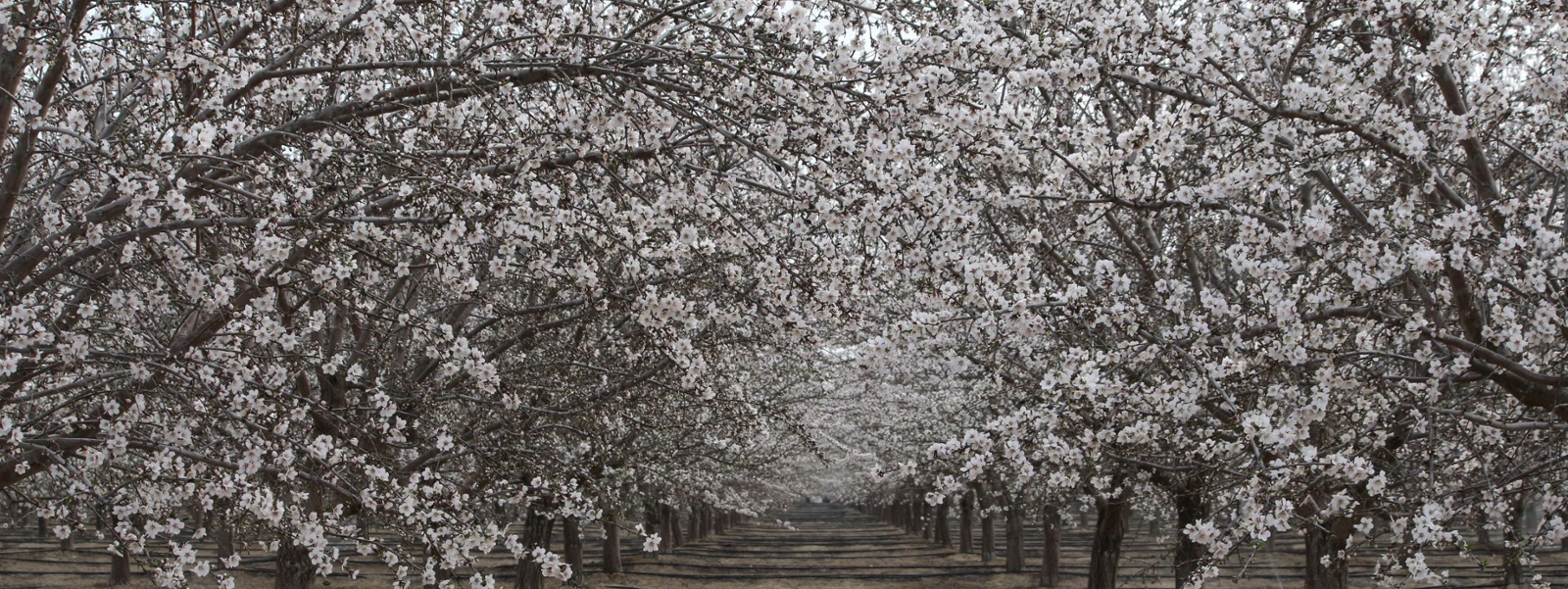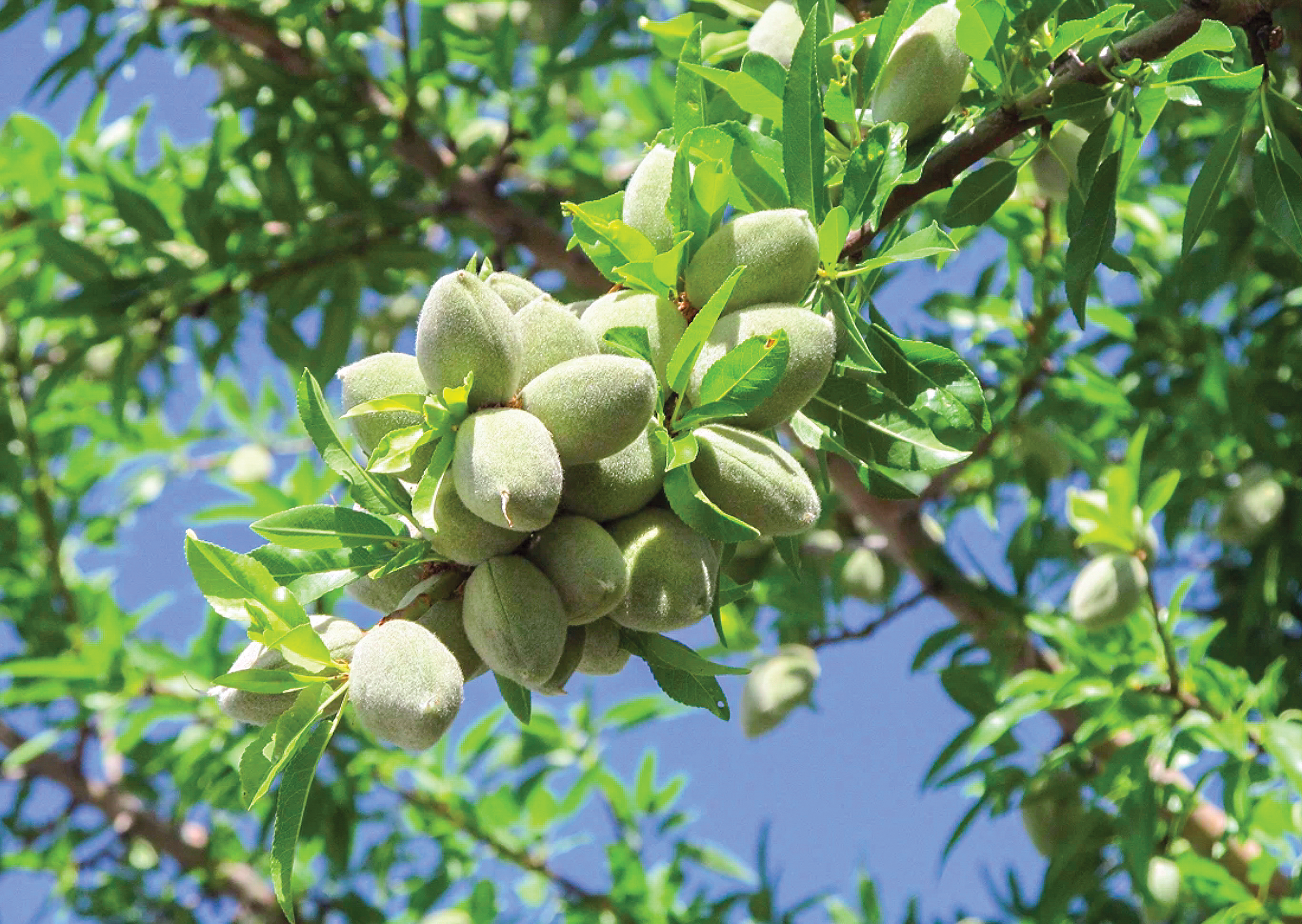Almond acreage drops but rains, trade boost hopes

California almond growers welcome more water this year from winter and spring storms, but they express concern that honeybees used for pollination did not get enough warm and sunny flight days to effectively set this year’s crop. Almond sector leaders say it will take some time before they fully understand the impact of unfavorable weather during bloom in February.
Photo/Ching Lee


Photo/University of California Agriculture and Natural Resources
By Christine Souza
Citing California’s improved water supply and increased almond shipments in early 2023, growers and almond sector leaders say the outlook has improved for the state’s No. 3 crop, valued at $5 billion.
Three years of drought and a drop in the almond price prompted growers to remove orchards and plant fewer trees. However, conditions changed this winter after atmospheric river storms brought above-average snowpack and filled empty reservoirs.
“We were on pins and needles that this was going to be another drought year, but our fortune changed quite dramatically with the winter that we had,” said Richard Waycott, president and CEO of the Almond Board of California.
During the past few years of drought, Daniel Hartwig, resource manager for Fresno-based Woolf Farming, said the company removed several hundred acres of almonds after receiving little to no water and a reduced almond price, which last year dropped to an average $1.67 a pound. The farm buys water from Westlands Water District, which this year will receive 100% of requested irrigation supplies from the Central Valley Project, an allocation that farmers haven’t seen since 2017.
“There was a decent amount of acres pulled out over the last three years just because the water was so scarce and so expensive,” Hartwig said. “This past winter, you couldn’t drive a mile on the west side in Fresno County and not see orchards getting pulled or getting prepared to get pulled. Then, amazingly, we get record rainfall.
“The cost of water is going to be down, and there’s going to be surplus water out there; Mother Nature has an interesting sense of humor,” Hartwig said.
Even with full supplies, Hartwig said he expects water from Westlands to cost $600 an acre-foot vs. $80 an acre-foot for water the farm receives on the east side of the valley.
California’s total almond acreage decreased in 2022 for the first time in more than 25 years, despite a slight increase in bearing acres, according to reports in late April by Land IQ and the U.S. Department of Agriculture National Agricultural Statistics Service.
Total almond acreage in 2022, which includes nonbearing trees, was estimated at 1.63 million, a 1.2% drop from the previous year. The report also estimates 77,700 acres of orchards will be removed by late August.
However, Land IQ’s report shows there will be 1.37 million bearing acres this crop year, an increase of 24,000 acres from 2022.
“These reports show a faster pace of removals and slower growth in bearing acreage, possibly signaling a trend towards lower California almond acreage for a while,” Waycott said. “On the other hand, we’re seeing record shipments in recent months as logistical issues are being resolved, so we know global demand for California almonds continues to grow.”
Walcott said California’s almond sector experienced record shipments in January, February and March, with March as the second-largest shipment month ever.
“Shipping for our company has been very good, especially this past month,” said Nick Gatzman, farm manager of Ripon-based Travaille & Phippen Inc., which exports almonds to Japan, the Middle East and Europe. “We’ve definitely been able to ship more.”
He added that “prices have started to trend upward.”
Last year, the company removed blocks of older orchards that were scheduled to come out but replanted another 60 acres of almonds.
“We’re moving forward with continuing to plant the existing ranches that we’re redeveloping,” Gatzman said.
Multiple factors, including supply-chain and trade issues, the war in Ukraine, inflation and higher interest rates, led to the largest-ever almond crop surplus of 837 million pounds coming into this year.
“It caused the buyers to say, ‘Why should I buy anything?’ That mentality now has shifted,” Waycott said. “I think we’ll see going forward a more traditional marketplace where demand and pricing for our growers will once again return to consistent profitability.”
Yuba City almond grower and shipper Sarb Thiara said almond shipments have improved, but global concerns remain.
“We still have issues in the world. We still have the Ukraine war going on and what is happening in our economy,” Thiara said. “With our dollar being so strong, interest rates high and people worried about eating (affordably), it will have an effect. I don’t think almonds are going to be priority No. 1.”
Retaliatory tariffs in top export markets of Indian and China remain, Thiara said, impacting almond shipments to markets across the globe.
“The situation we’re in, we have a lot of things stacked against us right now,” Thiara said, adding that he removed 80 acres of almonds this year.
Growers expressed concerns that rain and cool temperatures in Feburary during almond bloom, when bees pollinate trees, could affect almond yields.
“The bees just didn’t get the flight hours. It was too cold for the bees to get out,” Hartwig said. “We saw some places where there’d be a brief window where it would warm up, and you can see where in the orchard the bees were able to pollinate. Then you go a few more rows and nothing.”
Hartwig added that a reduced yield could strengthen the almond price.
In observing orchards in his area, Guzman said the crop appears inconsistent.
“You might have one field that looks decent, and you go a half mile down the road and you have a field that doesn’t look like there’s anything on it,” he said. “I think it’s going to be tricky to predict what overall production across the state is going to be.”
Growers say it will take some time before they fully understand the impact of unfavorable weather during bloom on the 2023-24 almond crop.
The U.S. Department of Agriculture forecast of the 2023 almond crop is expected next week. The 2022 crop totaled 2.6 billion pounds, 11% below the previous year’s 2.9 billion pounds, USDA reported.
“What we always have to remember in agriculture, in general, is that things are cyclical,” Hartwig said. “So, when things are good, you better put money away to make it through the bad times.”
(Christine Souza is an assistant editor of Ag Alert. She may be contacted at csouza@cfbf.com).




